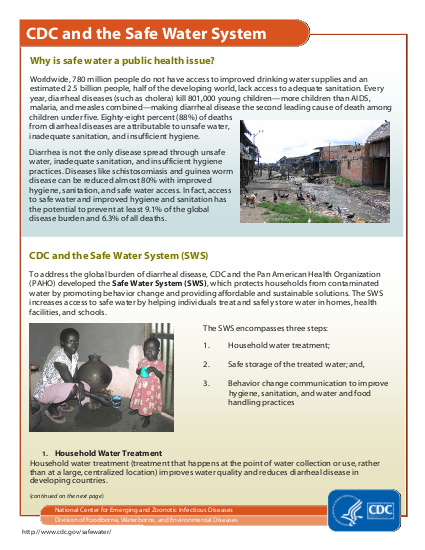
Since 1990, 2 billion people have gained access to improved drinking water sources and 1.8 billion people have gained access to improved sanitation. However, worldwide, 780 million people still do not have access to improved water sources and an estimated 2.5 billion people — half of the developing world — lack access to adequate sanitation 1. Eighty-eight percent (88%) of deaths due to diarrheal illness worldwide are attributable to unsafe water, inadequate sanitation, and poor hygiene 2. These diarrheal diseases (such as cholera) kill more children than AIDS, malaria, and measles combined, making diarrheal disease the second leading cause of death among children under five 2. To address this global disease burden, CDC and the Pan American Health Organization (PAHO) developed the Safe Water System (SWS), which protects communities from contaminated water by promoting behavior change and providing affordable and sustainable solutions. The SWS increases access to safe water by helping individuals treat and safely store water in homes, health facilities, and schools. The SWS encompasses three steps:
- Household water treatment;
- Safe storage of the treated water; and,
- Behavior change communication to improve hygiene, sanitation, and water and food handling practices
Links
Resource collections
- UN Habitat - Urban Response Collection
- Urban Response - Urban Crisis Preparedness and Risk Reduction
- Urban Response Collection - Community Engagement and Social Cohesion
- Urban Response Collection - Economic Recovery
- Urban Response Collection - Environment and Climate Change
- Urban Response Collection - Housing, Land and Property
- Urban Response Collection - Urban Crisis Response, Recovery and Reconstruction
- Urban Response Collection - Urban Resilience